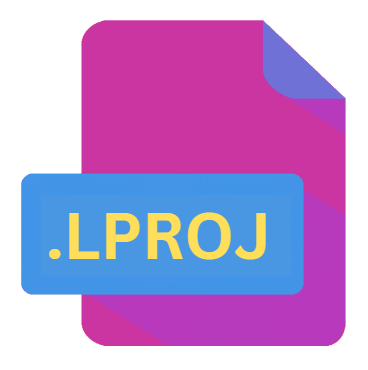.LPROJ File Extension

Localized Project Folder
| Developer | N/A |
| Popularity | |
| Category | Developer Files |
| Format | .LPROJ |
| Cross Platform | Update Soon |
What is an LPROJ file?
.LPROJ files are directories used primarily in macOS and iOS development environments.
They serve as containers for localized resources, allowing developers to organize and manage language-specific assets within a project.
These assets typically include strings, images, interface elements, and other resources that need translation or adaptation for different languages and regions.
More Information.
.LPROJ files have been integral to the localization workflow in Xcode since its early iterations. They were designed to address the challenges associated with translating and adapting software for diverse linguistic and cultural contexts.
By encapsulating language-specific resources within project folders, developers could easily identify, update, and deploy localized content without cluttering the main project structure.
Initially, .LPROJ files primarily contained string files (.strings) for storing localized text resources. Over time, their scope expanded to encompass various asset types, including images, nib files, storyboards, and property lists.
This evolution reflects the growing complexity of localization requirements in modern software development.
Origin Of This File.
The origin of .LPROJ files can be traced back to Apple’s ecosystem, particularly the Xcode IDE (Integrated Development Environment).
Xcode is the primary tool for macOS and iOS app development, providing developers with a comprehensive suite of features for building, debugging, and deploying applications.
As the demand for multilingual applications grew, Apple introduced .LPROJ files as a means to streamline the localization process.
By segregating localized resources into distinct folders, developers could efficiently manage translations and adapt their apps for global audiences.
File Structure Technical Specification.
.LPROJ files adhere to a specific directory structure mandated by Xcode and macOS. At the root level, each .LPROJ directory corresponds to a specific language or region, identified by a language code or locale identifier (e.g., en.lproj for English, fr.lproj for French).
Within each .LPROJ directory, developers can organize localized resources into subdirectories based on their respective types. For example, strings files typically reside in a subdirectory named “Strings,” while images may be stored in a directory labeled “Images.”
The technical specifications of .LPROJ files are closely tied to the macOS and iOS development frameworks. They rely on conventions established by Apple’s localization APIs and tooling, ensuring compatibility and interoperability within the ecosystem.
How to Convert the File?
Converting .LPROJ files to other formats or extracting their contents typically involves several steps, depending on the specific requirements of the project. Here’s a general guide on how to convert .LPROJ files:
- Identify the Target Format: Determine the format into which you want to convert the contents of the .LPROJ files. For example, you may want to extract strings for translation into a different language or convert images to a standard format.
- Extract Contents: Use appropriate tools or scripts to extract the contents of the .LPROJ files. For example, if you’re extracting strings for translation, you may need to extract .strings files from the .LPROJ directories.
- Convert Contents: Once the contents are extracted, convert them to the desired format using suitable tools or scripts. For strings, you may convert .strings files to standard text-based formats such as CSV (Comma-Separated Values) or XML (eXtensible Markup Language).
- Perform Conversion: If necessary, perform any additional processing or conversion steps required for the target format. This may involve restructuring data or applying transformations to ensure compatibility with the target environment.
- Integrate Converted Content: After conversion, integrate the converted content into your project or workflow as needed. For example, import translated strings back into your Xcode project or replace original images with converted versions.
- Testing and Validation: Thoroughly test the converted content to ensure its accuracy and integrity. Validate the converted files against the original .LPROJ files to verify that no information has been lost or corrupted during the conversion process.
- Iterative Improvement: Iterate on the conversion process as needed, refining your tools and workflows to improve efficiency and accuracy over time. Solicit feedback from stakeholders and incorporate any necessary adjustments to streamline the conversion process.
Advantages And Disadvantages.
Advantages:
- Organized Localization: .LPROJ files facilitate the systematic organization of localized resources within a project, enhancing readability and maintainability.
- Efficient Collaboration: By segregating language-specific assets, developers can collaborate more effectively with translators and localization teams.
- Simplified Deployment: Localized content stored in .LPROJ files can be easily bundled with the main application bundle, streamlining the deployment process.
Disadvantages:
- Platform Dependency: .LPROJ files are primarily associated with macOS and iOS development, limiting their utility in cross-platform projects.
- Complexity: Managing multiple .LPROJ directories for different languages and regions can introduce complexity, especially in large-scale projects with numerous localized resources.
- Version Control Challenges: Storing binary files within .LPROJ directories may pose challenges for version control systems, requiring careful configuration to ensure efficient collaboration.
How to Open LPROJ?
Open In Windows
- Third-Party Tools: Utilize third-party tools or utilities designed for macOS file system compatibility on Windows, such as Paragon Software’s HFS+ for Windows or MacDrive. These tools allow Windows users to access and manipulate files stored on macOS-formatted volumes, including .LPROJ files.
- Text Editors: .LPROJ files are essentially directories containing various resource files, so you can open them with text editors capable of navigating directory structures. While you won’t be able to edit the files directly, you can view their contents and extract relevant information.
Open In Linux
- Command Line: Linux users can access .LPROJ files using command-line utilities like
lsandcdto navigate directories and view file contents. Additionally, tools likegrepcan be used to search for specific strings within .strings files contained in .LPROJ directories. - Third-Party Tools: Similar to Windows, Linux users can explore third-party tools or utilities that provide macOS file system compatibility. These tools enable Linux users to mount and access macOS-formatted volumes, allowing them to interact with .LPROJ files as if they were on a macOS system.
Open In MAC
- Xcode: Use Xcode, Apple’s official IDE for macOS and iOS development, to open and manage .LPROJ files seamlessly. Xcode provides a comprehensive set of tools for browsing, editing, and organizing localized resources within .LPROJ directories.













